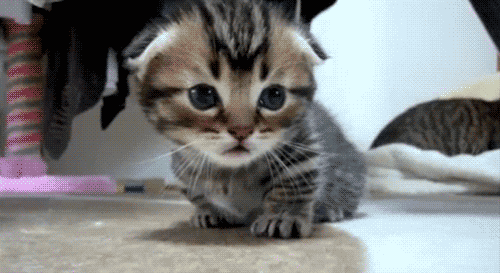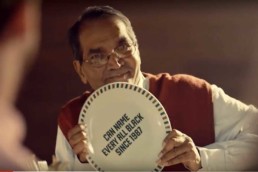Understanding what makes great content can help your business cut through the crowded world of social media.
You’re scrolling through the endless content that fills your social media feeds. Facebook, Instagram, Twitter, LinkedIn – it doesn’t really matter.
The screen is a blur of photos, videos and text as your thumb rubs upward in some kind of robotic ritual.
Most of the stuff that flashes by isn’t of iairnterest – baby photos, cute cats (actually, maybe you do stop and look at a few of those), news stories, memes.

But there are the rare posts that make you stop. The ones that rattle you out of your social media daze. Even if it’s just for a moment before you return to scrolling.
Do you know why that post caused you to pause?
If you spend enough time scrolling (and let’s face it, we all spend more than enough time scrolling), you eventually come across something that causes you to stop and click.
You make a conscious decision to invest a few moments of your valuable time in this piece of content.
This is the type of interruption that every business is striving to achieve online. It’s a small victory in the war for attention.
Why did you stop? Why did you click?
That’s what this article seeks to unravel. What are the common characteristics of great content marketing that force people to stop and pay attention?
5 essential components of great content
1. It’s invisible
I don’t mean that people can’t see it because that would be defeating the point.
The buzz word that marketing types use is “native”. This pretty much means that your content is at one with its surroundings.
It’s a manuka tree in a New Zealand forest. It fits in. It’s meant to be there. Got it?
By invisible I simply mean that it blends in. It’s camouflaged.
For example, if you’re scrolling through Facebook and see a post that’s obviously from a business trying to get your attention, that post is not invisible. And that’s a bad thing.
It causes people to cringe. It makes you look desperate. You’re not hip with the kids (or whatever target market you’re going for).
Ultimately, people scroll straight past that stuff. It’s a big turn off.
Content that’s invisible, or native, is designed for the platform it’s being shared on.
If it’s Facebook, it could be a meme, or a gif that totally nails it, or a short video (with subtitles!) that tells a compelling story, or a simple blog post with an attractive photo and hooky headline.
If it’s Instagram, then it could be an incredible photo, or a creative short clip like this one from Air New Zealand.
A post shared by Air New Zealand (@airnz) on
This is a really clever piece of content as it has nothing to do with flying. But this three-second clip says that Air New Zealand “gets” New Zealanders. It reinforces Air New Zealand’s key marketing message and builds brand equity, all without trying to sell something.
When people see invisible content they don’t realise it’s from a company striving for their attention.
It’s an immersive part of the social media experience.
It’s invisible because, initially, your audience doesn’t realise it’s engaging with you.
You’re not advertising at them.
You’re like Casper, the friendly ghost of social media.
2. It’s visible (yeah, I know)
Okay, so like I said people actually have to be able to see your content.
Content that’s literally invisible is 100% useless.
This is usually the ingredient that will cause people to pause. It creates the initial interruption.
So what does your content need to be visible?
Compelling images
How many people scrolling through social media will click on a boring blog link that has no image and a lame headline? Not many. Make sure that your social media posts look good. Use great photos, cartoons, videos, illustrations, infographics. Make sure that they align with your brand. Give people a reason to pause.
Hooky headlines
A headline should be used as bait. Not click bait. No one likes that. The difference is your bait has to deliver on what it’s promising. A hooky headline should tell people enough information about what’s in the post but leave enough information out so that they’re curious to know more. This is the same for videos. A common way marketers do this is by using the “5 ways” or “7 things” technique. This has been done to death, but still seems to be having success (hence why I’m using it in this post). There’s something about having a number that entices people to click. Just please, please don’t ever use the “You won’t believe what happened next” headline. Just no.
Strategic placement
To be visible, your content has to appear on the right platforms, at the right time, in front of the right people. Where is your audience? At what times are they engaging in social media? Why are they engaging with your content? Don’t just throw your content out into the world using some automation tool and hope for the best. Know why you’re delivering your content on a particular platform and adapt your content for each platform.
3. It delivers value
This is another hackneyed term thrown around in the content marketing world. Great content adds value to people’s lives.
And it’s true. Share valuable information and somewhere out there, someone will derive value from it. That someone is your audience, a potential customer.
You could be an accountant and share tips on personal finance. Or a nutritionist who shares healthy recipes. Or a builder who teaches people how to hammer a nail properly.
Every business has people with expertise. Leverage that expertise in your content.
It can take the form of a blog post, video, podcast – whatever is most fitting.
People are desperate for practical information that can improve their lives and you should be creating great content that delivers this to your audience.
Another way companies can add value is by creating content that has a deeper message. It highlights a serious issue, something that underpins the company’s mission or vision.
For example, outdoors company Patagonia often creates content with an environmental message. This can educate your audience on an important issue while establishing brand loyalty and equity (not that that should be the motivation. No, never…)
4. It’s entertaining
If your content doesn’t add value in the educational sense then it has to be entertaining. So it’s either educate or entertain (or sometimes both). Got it? Cool.
Content that’s entertaining provides a different kind of value to an audience. It provides an escape, a laugh, an emotional response.
This could be a meme, a funny video, an epic video like the great content that Red Bull puts out, or something as simple as a behind the scenes look at how your company creates a product from scratch. I mean who here hasn’t watched one of those videos of someone creating something cool? Like this one of the guy who literally builds a bush hut from scratch with his bare hands (amazing!), or all of those mouth-watering recipe videos that flood our Facebook feeds?
If you’re going to try and be entertaining, make sure you know your audience and what they’re in to. Also make sure you’re on brand.
5. It’s shareable
People want to share great content. You don’t have to ask them to tag their friends in the post, or to like and share it to be in the draw to win something.
Great content is inherently shareable. Whether it’s a killer professional blog post that a manager wants to share with her staff, or a creative piece of content that friends are going to like, share, and tag their mates in on Facebook, it doesn’t matter.
There has to be something about the content that makes your audience want to share it with others.
One of my favourite examples from the past year is the video that New Zealand agency Motion Sickness created for Blunt Umbrellas.
Introducing the strongest umbrella ever made. bit.ly/BluntAus
Posted by BLUNT Umbrellas on Sunday, 13 November 2016
This video has at least four of the five ingredients for great content.
-
- First of all, the video is “invisible”. It doesn’t look like marketing. It looks like any other meme that you might see on Facebook.
-
- It’s also visible in that it stands out in a news feed with its hooky headline “Strongest umbrella ever made” and the high-quality visuals. Everyone’s had a bad experience with an umbrella and is curious to know just how strong this one is.
-
- It’s entertaining. I mean, they shoot paint balls at this umbrella and put it up while driving at high speed in a convertible. What more could you ask for?
- And it’s shareable. Just look at the numbers: More than 1000 shares, 1 million+ views, more than 1000 comments. Any brand would be happy with those numbers.
You might also enjoy reading...



